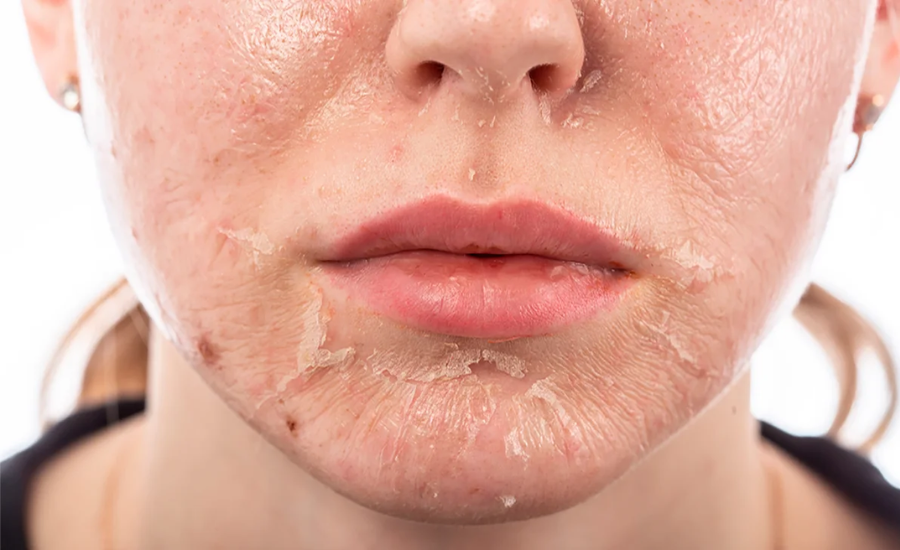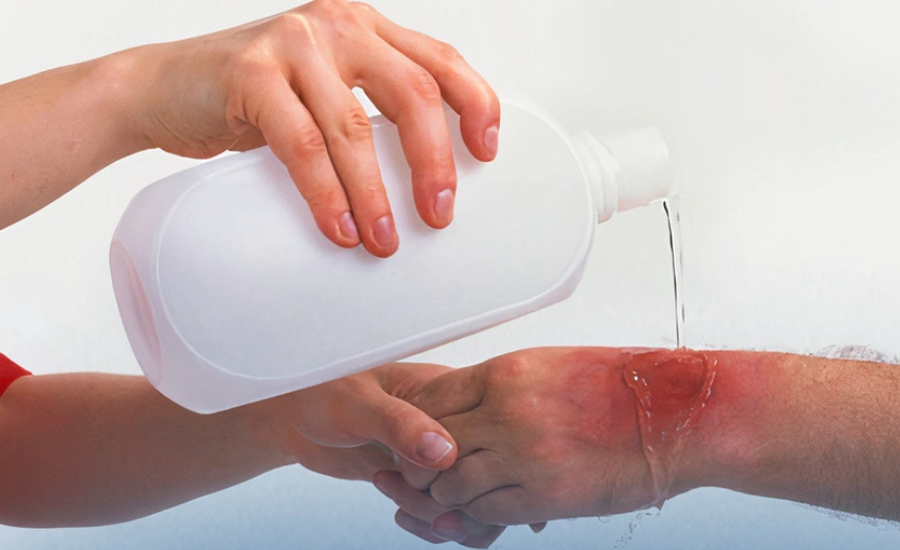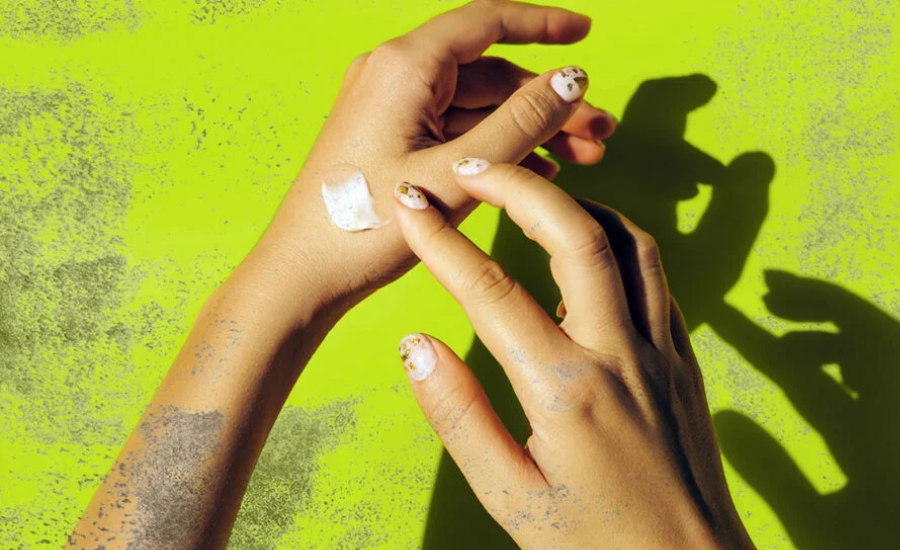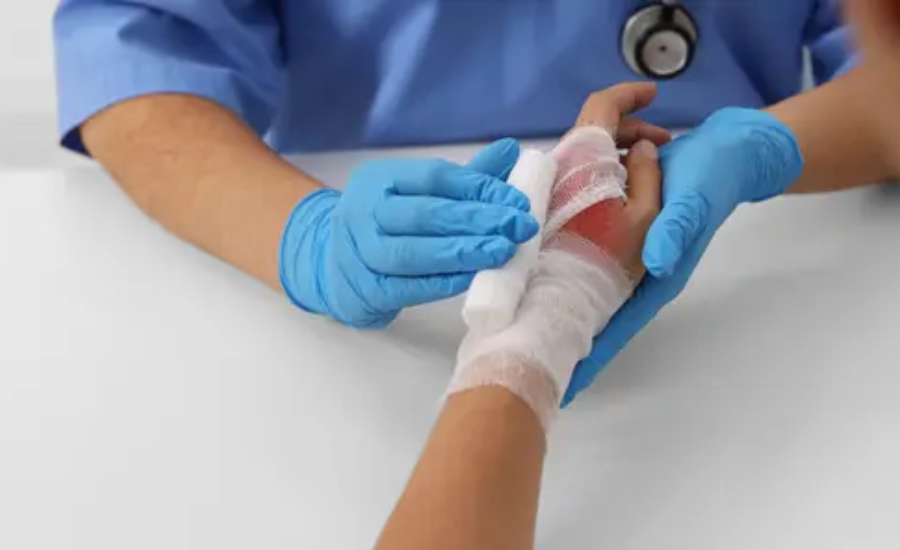Beasteater face chemical burns are a significant concern within the beauty and skincare communities. These burns occur when the skin reacts adversely to harsh chemical ingredients, leading to irritation, redness, and in severe cases, extensive damage. The term “Beasteater” refers to a specific range of products or ingredients known for their potential to cause such burns.
Understanding the risks associated with Beasteater products is vital for both enthusiasts and professionals. This guide will delve into the causes, symptoms, and treatment options for chemical burns, offering practical advice for maintaining healthy skin and avoiding these issues.
Causes of Beasteater Face Chemical Burns

Harsh Chemical Ingredients
The primary cause of Beasteater face chemical burns is exposure to potent chemicals found in some skincare products. Ingredients such as strong acids, alkaline substances, and solvents can trigger severe reactions when they come into contact with the skin. Products within the Beasteater line are particularly noted for their high concentration of these reactive components.
Misuse of Skincare Products
Improper use of skincare products, such as over-application or frequent usage, can elevate the risk of chemical burns. This is especially true for products designed to exfoliate or treat skin conditions like acne, which often contain strong active ingredients.
Environmental Factors
External conditions such as extreme temperatures, high UV exposure, or environmental pollutants can compromise the skin’s protective barrier. This makes the skin more vulnerable to the adverse effects of harsh chemicals found in some beauty products.
Recognizing Symptoms of Chemical Burns

Redness and Irritation
The initial sign of a chemical burn is often redness of the affected area. This can vary from mild to intense, accompanied by a burning or stinging sensation, indicating skin irritation.
Swelling and Tightness
Swelling is another common symptom, which can develop either immediately or gradually. This can make the skin feel tight and uncomfortable, signaling inflammation.
Blistering
In more severe cases, blisters may form. These fluid-filled bubbles on the skin’s surface are a sign of significant damage and should not be popped, as this can lead to infections and further harm.
Immediate Response Steps
Rinsing the Affected Area
If you suspect a chemical burn, it is crucial to rinse the area with cool water immediately. This helps remove any residual product and calms the skin. Gently rinse without scrubbing to avoid aggravating the irritation.
Applying a Cold Compress
Use a cold compress to alleviate redness and swelling. Soak a clean cloth in cold water and apply it to the affected area for several minutes to provide relief.
Avoiding Additional Products
Refrain from applying other skincare products, such as makeup or treatments, until the skin has fully healed. This will prevent further irritation and allow the skin to recover.
Long-Term Care and Prevention Strategies
Reading Product Labels
Always check the ingredient list of skincare products before use. Avoid those with known irritants or high concentrations of active ingredients. Opt for products designed for your specific skin type and concerns.
Patch Testing New Products
Perform a patch test on a small, less visible area of skin before using a new product on your face. Monitor for any adverse reactions over 24-48 hours to ensure the product is safe for use.

Following Usage Instructions
Adhere to the manufacturer’s instructions regarding product usage. Overuse or incorrect application can increase the risk of chemical burns.
The Role of Skincare Professionals

Expertise and Guidance
Skincare professionals, including estheticians and dermatologists, are instrumental in preventing and managing chemical burns. They should be knowledgeable about potential irritants and offer guidance on safe product use.
Precautions During Treatments
Professionals must conduct thorough consultations, perform patch tests, and monitor skin reactions during treatments to protect clients from adverse effects.
Immediate Care and Advice
In cases of chemical burns, professionals should provide immediate care, recommend appropriate soothing products, and advise on when to seek further medical attention.
Selecting Safe Skincare Products

Choosing Suitable Formulations
Select products tailored to your skin type, with soothing ingredients like aloe vera, chamomile, or hyaluronic acid. These can help calm irritation and support skin healing.
Avoiding Potent Actives
Be cautious with products containing high levels of exfoliating acids or active ingredients unless specifically recommended by a skincare professional.
Sun Protection Essentials
Daily Sunscreen Use
Applying a broad-spectrum sunscreen with SPF 30 or higher is crucial to protect the skin from UV damage, which can weaken the skin’s barrier and make it more susceptible to burns.
Protective Clothing and Shade
In addition to sunscreen, wear protective clothing such as hats and sunglasses, and seek shade during peak sun hours to minimize UV exposure.
Effective Treatments for Chemical Burns

Maintaining Cleanliness
Keep the affected area clean and dry. Use gentle, fragrance-free products to avoid further irritation.
Using Hydrocortisone Cream
Over-the-counter hydrocortisone cream can help reduce inflammation and itching. Apply according to the instructions provided.
Moisturizing
Regularly apply a gentle, fragrance-free moisturizer to maintain skin hydration and aid in the healing process.
When to Seek Professional Medical Advice
Severe Symptoms
If you encounter any of the following severe symptoms, it is crucial to seek professional medical help promptly:
- Intense Pain: If you experience extreme discomfort or pain that doesn’t subside with over-the-counter remedies or home treatments, it’s important to consult a healthcare professional. Intense pain may indicate a more serious burn or damage that requires specialized care.
- Extensive Blistering: While small blisters may be managed at home, widespread or large blisters are a sign that the burn is more severe. Extensive blistering can also increase the risk of infection and should be assessed by a medical professional to prevent complications.
- Signs of Infection: Watch for symptoms of infection, which can include pus, increased redness, warmth, or swelling around the affected area. An infection can exacerbate skin damage and delay healing. If you notice these signs, it’s essential to seek medical attention to receive appropriate antibiotics or other treatments.
- Worsening Redness: If the redness around the burn area becomes more pronounced or spreads beyond the initial burn site, this may indicate a worsening condition. Professional evaluation is necessary to address any complications or underlying issues.
Persistent Issues
In cases where symptoms do not improve despite following home treatment protocols, professional medical advice should be sought. Persistent issues may include:
- Ongoing Symptoms: If symptoms such as redness, pain, or swelling continue for an extended period or show no signs of improvement after several days, it’s important to consult a dermatologist. Persistent symptoms can suggest that the burn is not healing properly or that there might be other underlying concerns.
- Delayed Healing: If the healing process seems unusually slow or if the skin does not appear to be regenerating as expected, professional assessment is warranted. A dermatologist can provide a comprehensive evaluation and recommend advanced treatments or interventions.
- Changes in Skin Texture or Color: Any noticeable changes in skin texture or pigmentation, such as dark spots, lightening, or abnormal texture, should be evaluated by a specialist. These changes may require specific treatments to correct and ensure proper skin recovery.
- Emotional or Psychological Impact: Sometimes, the emotional or psychological effects of dealing with a severe burn can be significant. If you find that the condition is affecting your mental health, seeking professional help from a counselor or therapist may also be beneficial.
Consulting a Dermatologist
A dermatologist is trained to handle complex skin conditions and can offer tailored treatment plans based on your specific needs. During a consultation, they may:
- Conduct a Detailed Examination: Perform a thorough examination of the affected area to assess the extent of the burn and determine the appropriate course of action.
- Recommend Advanced Treatments: Suggest advanced treatments or therapies that may not be available over-the-counter, such as prescription medications, specialized ointments, or advanced wound care techniques.
- Provide Aftercare Guidance: Offer detailed instructions on how to care for your skin post-treatment to ensure proper healing and prevent further issues.
- Monitor Recovery: Schedule follow-up appointments to monitor the healing process and make any necessary adjustments to the treatment plan.
Personal Accounts and Insights
Sarah’s Journey
Sarah, an avid user of at-home chemical peels, suffered a severe chemical burn despite following instructions. “The pain was intense, and I feared permanent damage,” she recalls. A dermatologist’s prescribed regimen, including aloe vera and a mild steroid cream, facilitated her recovery. Sarah’s experience underscores the importance of professional consultation and patch testing.
Expert Advice from Dr. Emily
Dr. Emily, a skincare expert, highlights the increasing frequency of chemical burns due to misuse of over-the-counter products. “People often overlook the potency of these products. It’s crucial to use them as directed and seek professional advice when uncertain,” she advises.
Community Support and Learning
Engage with Online Skincare Communities
Joining online skincare communities and forums can be incredibly beneficial for anyone dealing with or wanting to prevent Beasteater face chemical burns. These platforms offer a wealth of shared knowledge and personal experiences that can provide support and practical advice.
- Discussion Forums: Participate in skincare forums where users discuss their experiences with various products and treatments. These forums often have dedicated threads for chemical burns and skin reactions, allowing you to learn from others who have faced similar issues.
- Social Media Groups: Follow and join skincare-related groups on social media platforms like Facebook, Reddit, or Instagram. Many of these groups are moderated by skincare professionals or enthusiasts who can offer guidance and answer questions.
- Support Networks: Some communities focus specifically on providing support for those dealing with skin issues. Engaging with these networks can offer emotional support and practical tips from others who understand the challenges of managing skin damage.
Sharing and Learning from Experiences
Sharing your own experiences and learning from others’ journeys can be invaluable in understanding and managing chemical burns.
- Personal Stories: Sharing your story about how you managed or recovered from a chemical burn can help others who might be going through similar situations. It can also foster a sense of community and mutual support.
- Expert Advice: Many online communities feature contributions from dermatologists and skincare experts who provide professional insights and recommendations. Take advantage of their expertise to gain a deeper understanding of skin care and burn prevention.
- Educational Resources: Look for community-shared resources, such as articles, tutorials, and webinars, that offer detailed information on skin health and burn treatment. These resources can enhance your knowledge and help you make informed decisions about skincare products and practices.
Benefits of Community Engagement
- Empowerment: Engaging with a community helps you feel empowered by connecting with others who have similar experiences. It provides a sense of solidarity and assurance that you are not alone in your skincare journey.
- Real-time Feedback: Receive real-time feedback and recommendations from people who have firsthand experience with various products and treatments. This can help you make more informed choices and avoid potential pitfalls.
- Emotional Support: Dealing with skin issues can be emotionally challenging. Supportive communities offer a space to share frustrations, celebrate progress, and receive encouragement from others who understand the emotional impact of skin health issues.
Facts
- What are Beasteater Face Chemical Burns?
- Beasteater face chemical burns occur when the skin reacts negatively to potent chemicals found in some skincare products, resulting in irritation, redness, and potentially severe damage.
- Causes of Chemical Burns:
- Harsh Chemical Ingredients: Products with strong acids, alkaline substances, or solvents.
- Misuse of Skincare Products: Overuse or incorrect application of exfoliants or active treatments.
- Environmental Factors: Extreme temperatures, high UV exposure, and environmental pollutants.
- Symptoms:
- Redness and Irritation: Initial signs of a chemical burn.
- Swelling and Tightness: Indicative of inflammation.
- Blistering: Sign of more severe damage.
- Immediate Response:
- Rinsing the Affected Area: Use cool water to remove residue.
- Applying a Cold Compress: To alleviate redness and swelling.
- Avoiding Additional Products: Prevent further irritation.
- Long-Term Care and Prevention:
- Reading Product Labels: Avoid known irritants.
- Patch Testing New Products: Test on a small area before full application.
- Following Usage Instructions: Adhere to recommended usage guidelines.
- Professional Medical Advice:
- Severe Symptoms: Intense pain, extensive blistering, signs of infection, worsening redness.
- Persistent Issues: Ongoing symptoms, delayed healing, changes in skin texture or color, emotional impact.
- Role of Skincare Professionals:
- Expertise and Guidance: Knowledgeable about potential irritants.
- Precautions During Treatments: Conduct consultations and monitor reactions.
- Immediate Care and Advice: Provide soothing treatments and guidance.
- Community Support:
- Engaging with Online Skincare Communities: Participate in forums, social media groups, and support networks to share experiences and seek advice.
FAQs
Q1: How can I identify if a product might cause a chemical burn?
A: Look for products with high concentrations of strong acids, bases, or solvents. Always read ingredient labels and perform patch tests before full application.
Q2: What should I do if I experience redness and irritation from a skincare product?
A: Rinse the affected area with cool water immediately, apply a cold compress, and avoid using additional products on the irritated area until it heals.
Q3: When is it necessary to seek professional medical advice for a chemical burn?
A: Seek medical advice if you experience severe symptoms such as intense pain, extensive blistering, signs of infection, or if symptoms persist despite home treatment.
Q4: How can I prevent future chemical burns from skincare products?
A: Read product labels carefully, perform patch tests, and follow the manufacturer’s usage instructions. Additionally, choose products suited to your skin type and concerns.
Q5: What are some effective treatments for chemical burns?
A: Maintain cleanliness with gentle, fragrance-free products, use hydrocortisone cream to reduce inflammation, and apply a gentle moisturizer to keep the skin hydrated.
Conclusion
Beasteater face chemical burns highlight the importance of careful skincare practices and product use. Understanding the causes, recognizing the symptoms, and knowing the appropriate response steps are essential for protecting your skin and promoting rapid healing. Always be proactive in preventing such burns by selecting suitable products, adhering to usage instructions, and seeking professional advice when necessary. Engaging with skincare communities can also provide valuable support and insights, helping you navigate and manage skin health more effectively. By prioritizing skin protection and adopting preventive measures, you can minimize the risk of chemical burns and maintain healthy, resilient skin.
Read More: US Wire Magazine
